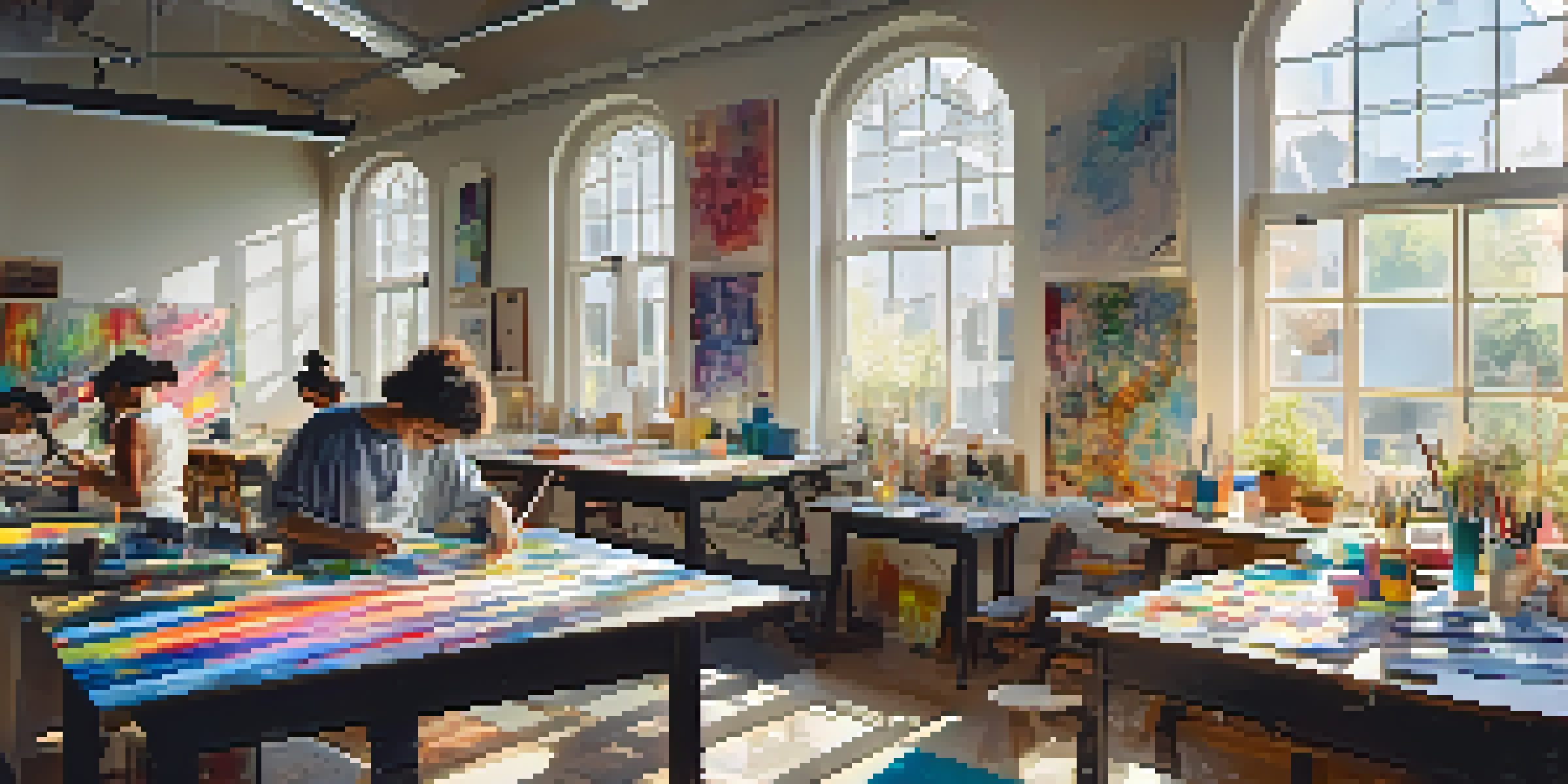Incorporating Mixed Media in Painting Classes for Beginners

Understanding Mixed Media: A Beginner's Guide
Mixed media art combines various materials and techniques to create unique pieces. For beginners, this approach opens up a world of creativity and experimentation. Instead of sticking to traditional painting methods, students can incorporate elements like collage, fabric, and found objects, making their artwork truly one-of-a-kind.
Benefits of Mixed Media for Beginners
Incorporating mixed media into painting classes offers numerous benefits. It encourages students to break free from conventional techniques and explore their artistic voices. Additionally, this approach can help boost confidence as learners discover new ways to express their ideas and feelings through art.
Mixed Media Sparks Creativity
Exploring mixed media allows beginners to experiment with diverse materials and techniques, leading to unique artistic expressions.
Essential Materials for Mixed Media Art
To get started with mixed media, beginners will need a variety of materials. Common supplies include acrylic paints, watercolors, glue, and various paper types. It's also helpful to have items like scissors, brushes, and even textiles on hand to inspire creativity and experimentation.
Techniques to Introduce in Classes
When teaching mixed media, it's essential to introduce various techniques. For instance, layering different materials can create depth and texture in a painting. Additionally, using techniques like collage or stenciling can encourage students to think outside the box and combine their artistic skills.
Supportive Environment Boosts Confidence
Creating a welcoming classroom atmosphere encourages students to take risks and embrace their artistic voices without fear of mistakes.
Creating a Welcoming Environment for Experimentation
A supportive classroom atmosphere is crucial for encouraging creativity. Teachers should allow students to experiment without fear of making mistakes. By fostering a space where learners feel comfortable sharing their ideas and trying new things, they will be more likely to embrace mixed media in their artwork.
Incorporating Themes and Personal Stories
Encouraging students to incorporate themes or personal stories into their mixed media projects can enhance their engagement. By relating their artwork to meaningful experiences, learners develop a deeper connection to their creations. This personal touch not only makes the artwork more authentic but also fosters a sense of ownership.
Personal Themes Enhance Engagement
Incorporating personal stories into artwork fosters deeper connections, making the creative process more meaningful and authentic for students.
Showcasing Student Work and Progress
Celebrating student work is vital for motivation and growth. Consider organizing exhibitions or showcases to display their mixed media projects. This not only highlights their progress but also fosters a sense of community among students, encouraging them to support one another in their artistic journeys.
Resources and Inspiration for Mixed Media Artists
Finally, providing students with resources for inspiration can spark creativity. Recommend books, online tutorials, or local art exhibitions that focus on mixed media. By exposing learners to various styles and techniques, they can find inspiration to develop their unique artistic voices.